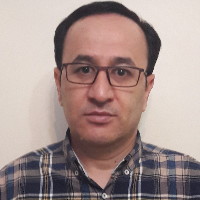Evaluating Efficiency of the Hydrologic Component of the LISEM Model in the Kechik Experimental Watershed, Golestan Province, Iran
Modeling is an important approach in evaluating and appraisal of catchment systems especially in better understanding of hydrologic and erosion processes. to this end, a wealth of various types of models has been developed to simulate catchment processes. the physically-based models are the most accurate and complicated ones. The LISEM is an example of physically-based models. This hydrologic and soil erosion model was designed and applied first in 1990s in the hilly loessial area in the Netherlands in order to get sustainable management strategies. The LISEM model is a process based raster model that operates on catchment scale, which is limited to single rain events. Due to deep loessial soils, population growth, overexploitation of lands and climate conditions, the undulating fertile lands in eastern part of the Golestan Province experience extensive rill, gully and channel erosions as well as destructive floods. Having in mind the abovementioned conditions and consequent financial damages and life loss in the area, investigating on sustainable methods of soil and water resources management becomes a necessity. In the present study, due to the similarity in the edaphic and climatic conditions of the study area with the hilly loessial area in the southern Netherlands for there the LISEM model has been developed, it is tried to evaluate the efficiency of the hydrologic component of the LISEM model for the Kechik catchment which is a well equipped experimental paired catchment. The hydrologic component is the prerequisite of the soil water erosion component of the model. The results of application the LISEM model in the Kechik catchment indicated that there is a good agreement between the observed and simulate hydrographs. Whereas, both correlation coefficient and Nash Satclif criteria were above 0.80. Moreover, the hydrograph characteristics such as peak discharges, total discharge and time to peak for the simulated and observed hydrographs were in a good agreement. These results indicate the efficiency of the LISEM model in simulation of rainfall-runoff processes in the Kechik watershed.
- حق عضویت دریافتی صرف حمایت از نشریات عضو و نگهداری، تکمیل و توسعه مگیران میشود.
- پرداخت حق اشتراک و دانلود مقالات اجازه بازنشر آن در سایر رسانههای چاپی و دیجیتال را به کاربر نمیدهد.


